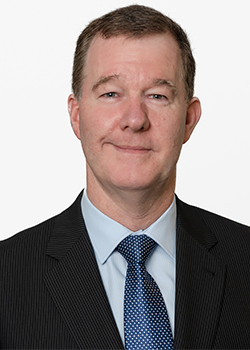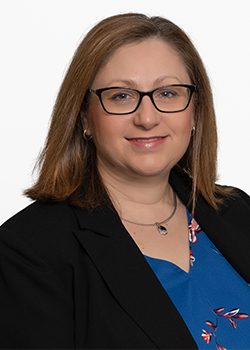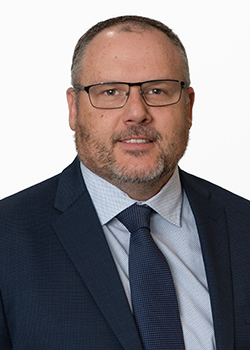Striking a balance in the new financial year

.
If you’re someone who likes a good balance in your investing life, now may be a good time to do some calculations.
It’s not something you must do, but doing so may give you some extra peace of mind if your investment strategy involves having a specific percentage of your capital invested in certain asset types.
As asset values tend to rise and fall on an ongoing basis, your investment allocations may have moved out of alignment with your intended percentage exposures. This is sometimes referred to as portfolio drift.
And if your portfolio values have drifted significantly you may be inclined to make some adjustments to rebalance your portfolio based on your preferred asset exposures.
Tracking portfolio drift
How often you choose to track your portfolio allocations is entirely up to you, although the start of a new financial year can be a useful trigger point.
That’s because it’s typically a time when you may be beginning to review your investment statements from the previous financial year ahead of lodging your next income tax return.
The easiest way to calculate movements in your asset allocations over the previous financial year is by taking snapshots at both the start and the end of the period.
Let’s say, as an example, that your investment strategy involves having a 50% allocation to Australian shares (for capital growth) through an index-tracking fund and 50% to Australian bonds (for capital protection and income), also through an index-tracking fund.
At the start of the 2023-24 financial year you had $100,000 invested into each index fund – a total investment of $200,000.
For the purposes of this article, the value for Australian shares is based on the 2023-24 performance of the S&P/ASX 300 Index while the value for Australian bonds is based on the performance of the Bloomberg AusBond Composite 0+ Year Index.
By the end of 2023-24 your allocation to Australian shares would have been worth approximately $107,670 (before costs) based on the 7.67% return from the broad Australian share market over the financial year to 3 June 2024. Your allocation to Australian bonds would have risen to approximately $103,490 (before costs) based on a 3.49% gain in 2023.
As a result of the index returns, on a percentage basis, your respective allocations would have moved to approximately 51% (Australian shares) and 49% (Australian bonds).
This represents a relatively small portfolio drift over the financial year. However, it’s easy to see that investment portfolio asset allocations generally do drift as a result of normal market movements.
Rebalancing your portfolio
If the structure of your investment portfolio has moved significantly out of alignment over time, you may decide to rebalance it so your allocations are recalibrated to align with your intended strategy.
If you need to, you can sell assets in your portfolio and then use the proceeds to top up your allocation to other assets that have fallen in value or experienced a lower rate of growth.
Or you can simply invest additional amounts into assets that have fallen in value while retaining your dollar exposure to the other assets in your portfolio.
Another option is to invest in diversified (or multi-asset) managed funds or exchange traded funds (ETFs) which have set percentage weightings to different asset types.
Professional portfolio managers rebalance these funds whenever their set investment allocation moves out of alignment, based on set tolerance levels.
Multi-asset funds are essentially ready-made portfolios which, depending on the investment strategy of the relevant fund, enable you to select higher or lower exposures to shares, bonds and other asset types.
But there’s a key difference between how professional portfolio managers can readily rebalance a portfolio versus the average do-it-yourself investor.
Generally, rather than having to sell assets to keep a portfolio aligned with its target asset allocations, a portfolio manager will use cash inflows to buy additional assets.
This reduces turnover of assets in the fund’s portfolio and greatly reduces the need to realise capital gains (or losses).
By contrast, DIY investors choosing to sell some assets in order to top up others will typically trigger a capital gains tax event. They generally don’t have the benefit of daily cash flows into their portfolio to top up ‘underweight’ asset types.
Staying balanced
Whether you leave it to the experts or do it yourself, from an investment strategy perspective there are clear benefits in avoiding portfolio drift as much as possible.
Rebalancing your asset mix keeps you aligned with your chosen investment strategy, based around your risk tolerance.
Ignoring portfolio drift can be detrimental over time. As well as drifting off your chosen investment course, you could also find yourself being exposed to unintended investment risks, for example by having higher or lower exposures to shares or bonds than you intended.
Important information and general advice warning
Vanguard Investments Australia Ltd (ABN 72 072 881 086 / AFS Licence 227263) is the product issuer and the Operator of Vanguard Personal Investor and the issuer of the Vanguard® Australian ETFs. We have not taken your objectives, financial situation or needs into account when preparing the above article so it may not be applicable to the particular situation you are considering. You should consider your objectives, financial situation or needs, and the disclosure documents for any relevant Vanguard product, before making any investment decision. Before you make any financial decision regarding Vanguard investment products, you should seek professional advice from a suitably qualified adviser. A copy of the Target Market Determinations (TMD) for Vanguard's financial products can be obtained at vanguard.com.au free of charge and include a description of who the financial product is appropriate for. You should refer to the relevant TMD before making any investment decisions. You can access our IDPS Guide, PDSs Prospectus and TMD at vanguard.com.au or by calling 1300 655 101. Vanguard ETFs will only be issued to Authorised Participants. That is, persons who have entered into an Authorised Participant Agreement with Vanguard (“Eligible Investors”). Retail investors can transact in Vanguard ETFs through Vanguard Personal Investor, a stockbroker or financial adviser on the secondary market. Retail investors can only use the Prospectus or PDS for informational purposes. Past performance information is given for illustrative purposes only and should not be relied upon as, and is not, an indication of future performance. This article was prepared in good faith and we accept no liability for any errors or omissions.
© 2024 Vanguard Investments Australia Ltd. All rights reserved.
July 2024
Vanguard
vanguard.com.au







